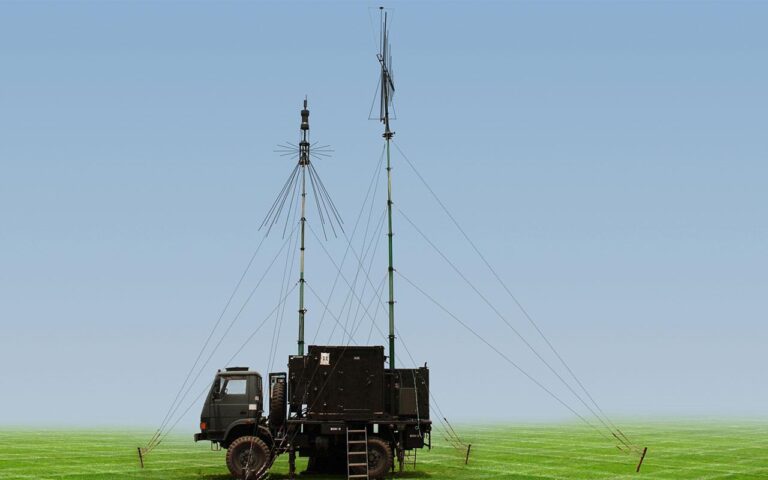Estonia has reported that Russia is repositioning its electronic jamming systems closer to the NATO border, escalating concerns over increased military activity in the region. According to Estonian officials, the move is part of Moscow’s broader strategy to enhance its electronic warfare capabilities near alliance territories. The developments come amid heightened tensions between Russia and NATO, raising alarms about potential disruptions to communication and surveillance operations in the strategically sensitive Baltic area.
Russia Advances Electronic Warfare Capabilities Near NATO Frontier
Estonian officials have reported a significant increase in Russian electronic warfare (EW) deployments near their borders, marking a sharp intensification in Moscow’s strategic posture. The newly positioned jamming systems possess the capability to interfere with communication networks, radar signals, and navigation tools used by NATO forces operating in the region. Experts warn this maneuver could compromise the alliance’s operational effectiveness and situational awareness during heightened tensions in Eastern Europe.
Key implications of the Russian deployment include:
- Disruption of NATO military drills and real-time data exchange.
- Potential interference with civilian aviation and maritime navigation.
- Escalation of electronic countermeasures leading to regional instability.
| System Type | Estimated Range | Primary Function |
|---|---|---|
| Krasukha-4 | 150 km | Radar jamming |
| RB-301B | 100 km | Satellite signal disruption |
| Murmansk-BN | 200 km | Communications interception |
Impact on Estonia and Regional Security Dynamics
The recent deployment of Russian jamming systems near Estonia’s border has triggered alarm bells among NATO members, igniting concerns over the security architecture in the Baltic region. Estonian officials assert that these advanced electronic warfare capabilities could severely disrupt communication channels vital to NATO forces, potentially undermining the alliance’s rapid response mechanisms. With Estonia positioned on the frontline of European security, the proximity of these jamming installations raises the stakes, compelling allies to reassess their defensive postures and intelligence-sharing protocols to counteract the emerging threat.
Regional security dynamics are now caught in a more precarious balance, as neighboring countries evaluate the implications of this encroachment. The enhanced Russian electronic footprint not only challenges Estonia’s national security but also signals a broader strategic intent to exert influence over Baltic airspace and maritime routes. Observers suggest that such tactical moves could lead to:
- Increased NATO military presence in Baltic states to deter further provocations
- Enhanced cyber defense initiatives aimed at countering electronic interference
- Heightened diplomatic engagements among EU and NATO members to formulate cohesive response strategies
| Element | Potential Impact |
|---|---|
| Communication Systems | Jamming and disruption |
| Military Response Time | Delayed mobilization |
| Regional Stability | Increased tension and uncertainty |
Recommendations for NATO’s Strategic Response and Enhanced Surveillance
To counteract the increasingly aggressive electronic warfare tactics observed near NATO’s eastern flank, member states must invest in advanced signal intelligence and counter-jamming technologies. Strengthening the integration of existing radar and satellite systems with real-time data analytics will allow for quicker identification and response to electronic interference. Moreover, expanding joint exercises focused on electronic warfare resilience will ensure preparedness against sophisticated jamming maneuvers. NATO could also benefit from increasing collaboration with civilian aerospace and telecommunications sectors to leverage cutting-edge commercial technologies in surveillance and signal monitoring.
Enhancing the Alliance’s situational awareness is crucial through deploying mobile and fixed advanced sensor platforms along vulnerable border regions. These deployments should be accompanied by strengthened cyber defense frameworks to safeguard the integrity of surveillance data. Below is a summary of key strategic priorities for NATO’s enhanced surveillance posture:
| Priority | Action | Outcome |
|---|---|---|
| Technology Upgrades | Deploy next-gen signal processing systems | Improved detection of jamming attempts |
| Joint Exercises | Conduct electronic warfare drills annually | Operational readiness and coordination |
| Sector Collaboration | Partner with civilian tech firms | Access to innovation and rapid adaptation |
Concluding Remarks
As tensions persist between NATO and Russia, the relocation of Russian jamming systems closer to the alliance’s borders underscores the ongoing strategic maneuvering in the region. Estonia’s alert highlights the growing security concerns among Baltic states, signaling potential challenges for NATO’s defensive posture in Eastern Europe. Observers will be closely monitoring developments as both sides continue to assert their military capabilities amid an uneasy stalemate.




